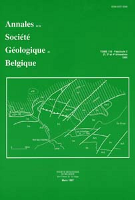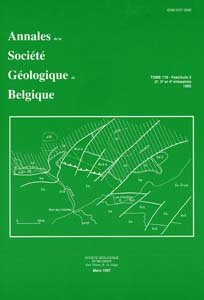- Startpagina tijdschrift
- Publications spéciales = special publications
- L'évolution quaternaire des bassins fluviaux de la...
- Les bassins hydrographiques de la Mer du Nord méridionale
Weergave(s): 681 (4 ULiège)
Download(s): 146 (1 ULiège)
Les bassins hydrographiques de la Mer du Nord méridionale
Vue d'ensemble et quelques réflexions

Abstract
The fluvial basins of the meridional North Sea form a fairly disparate ensemble. To the East the ice caps have often modified the network of German rivers and they have destroyed the terraces of ancient deposits. In the center, the Rhine and the Meuse Rivers, with their common delta, provide most of the information regarding Quaternary evolution and these two systems are easily compared. In some regions one can distinguish, in the most favorable areas, about a dozen essentially periglacial terraces. Those terraces intersect in the lower course where glacial eustatism and subsidence have determined a continuous sedimentation. The terraces of the Meuse progressively decrease upstream in number while in the Rhine basin the subsidence and uplift randomly modify their number, appearance, or their relief. To the West the Scheldt River presently reveals, for the first time, seven Quaternary levels that, just as for the Somme River, are essentially in relation with the glacial phases. Finally, to the North-East, only the Thames River exhibits numerous terraces, while the other rivers, flowing in large proportion upon the glacial deposits, present but a few scattered terrace remnants.
Since the previous revision of the subject (Soergel, 1939), only a few new terrace levels have been observed. They have been detected primarily in the Scheldt basin (where a synthesis did not yet exist), and near the alluvial plain of the Meuse. There seems to be a tendency to increase the age of the terraces. This fact is probably in relation with the six cold periods now described by Dutch quaternary geologists.
With regard to the origin of the terraces, most of their Quaternary deposits are at the present time considered to be glacial (or rather periglacial), while tectonics either modify the number of the terraces, or on the contrary determine a continuous sedimentation. The influence of glacial eustatism is very weak, practically limited to delta or regions very close to sea level.
In addition, fairly recent interglacial terraces are described in several river basins, namely in the Scheldt and Meuse basins.
Finally, the large number of periglacial terraces (observed in the most favorable cases), must probably be placed in relation with cold interstadial periods of the main Quaternary glaciations, periods that are still not well known for the more ancient glaciations.






